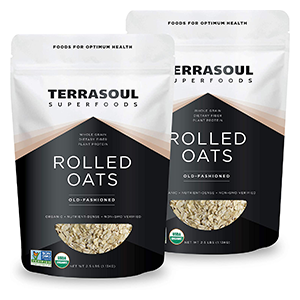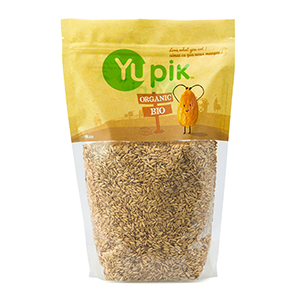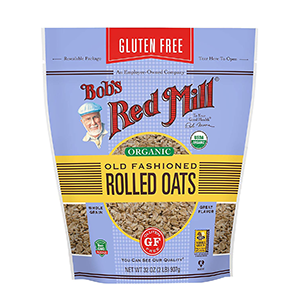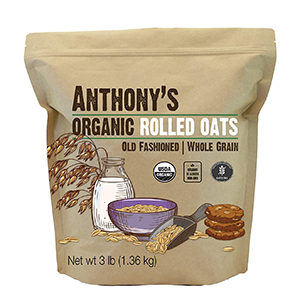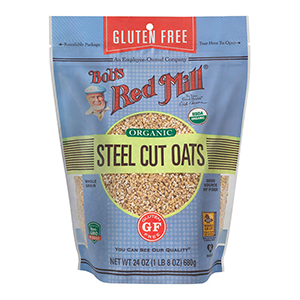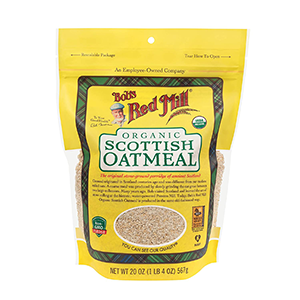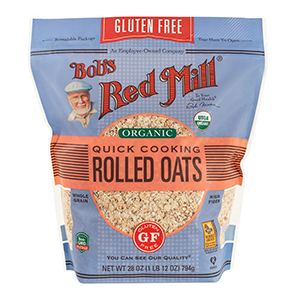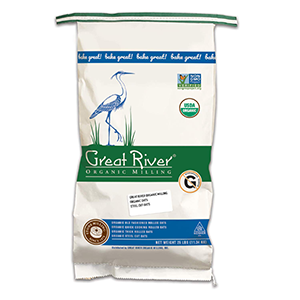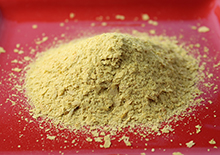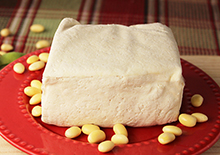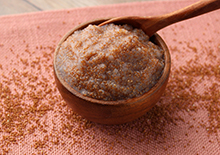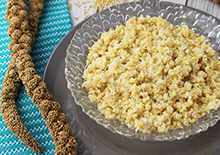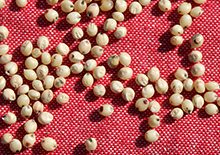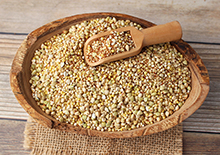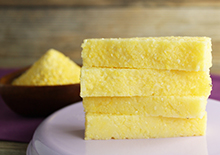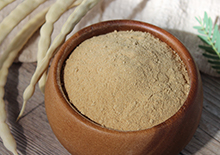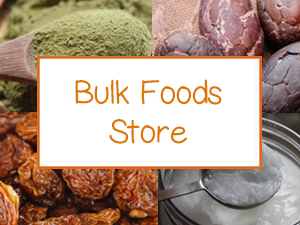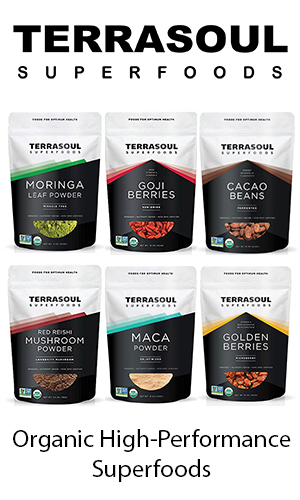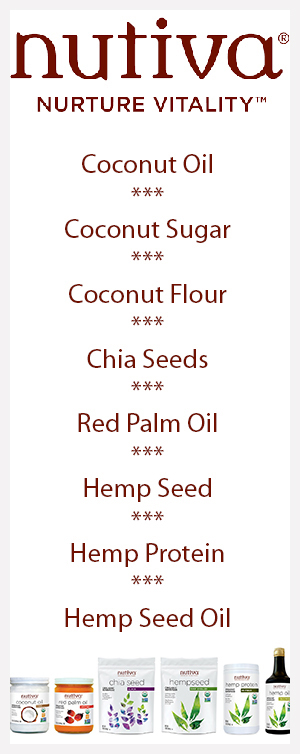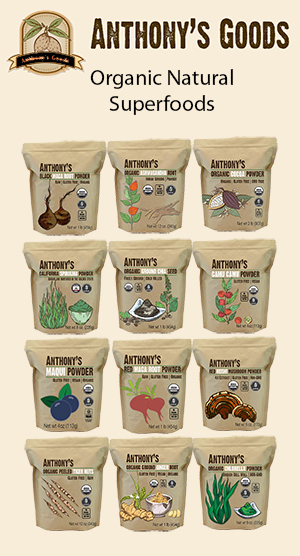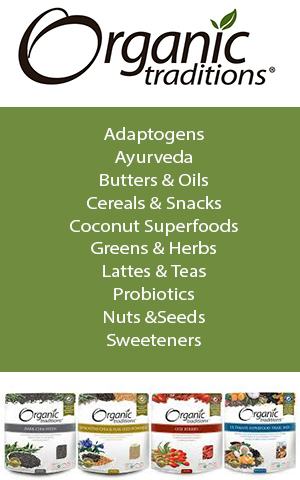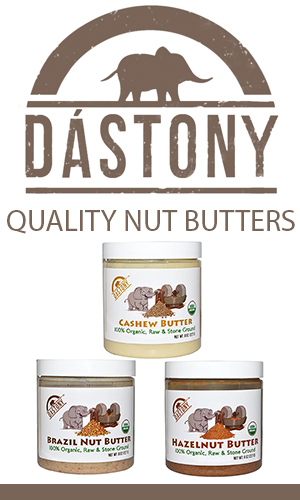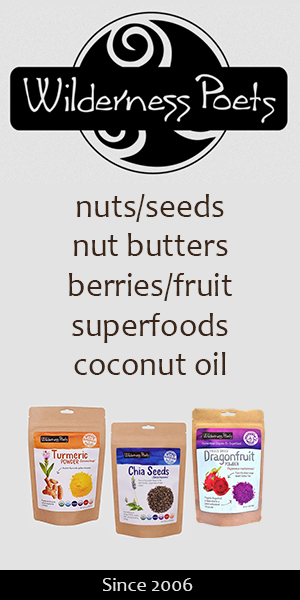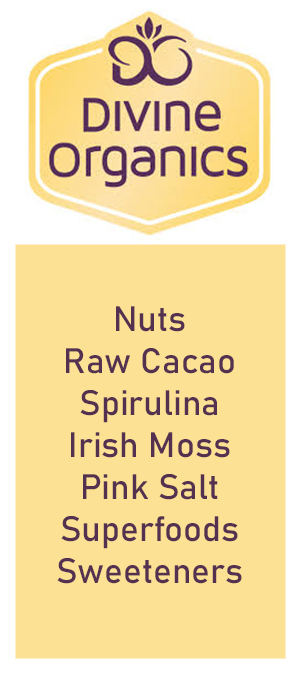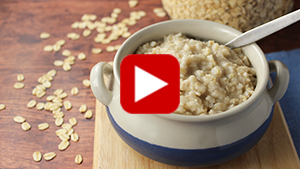- Home
- Plant-Based Cooking
- Benefits of Oatmeal
Benefits of Oatmeal, Top 4 Reasons to Eat It for Breakfast
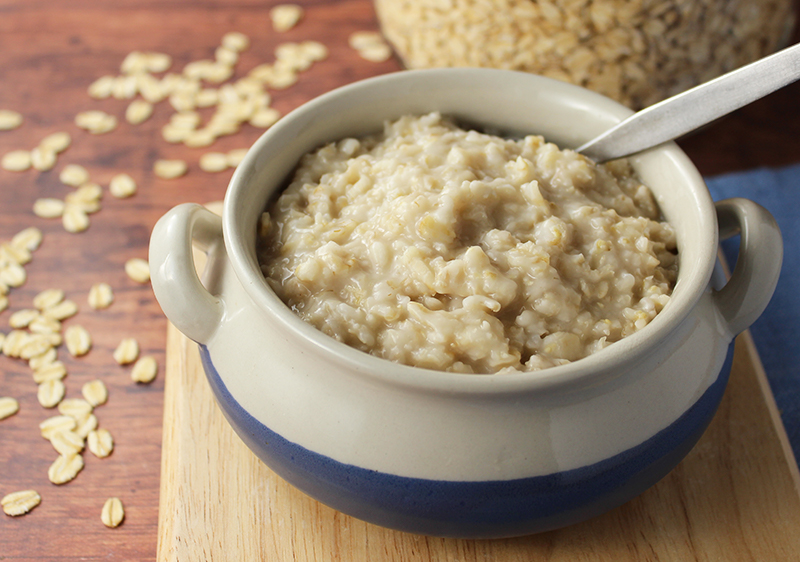
What are the benefits of oatmeal for the average person?
Below we'll discuss the top reasons you might want to add this type of hot creamy cereal to your list of breakfast possibilities.
But first, what are oats and how are they processed?
What are Oats?
Table of Contents
Intro | What are Oats? | 5 Types of Oats | Top 4 Reasons to Eat Oatmeal | Precautions | Shop
The common oat is believed to have been first domesticated from the wild oat (Avena sterilis) in locations of the Fertile Crescent, as was the case with many staple food crops.
All oats, whether cut, rolled or ground, come from oat groats, a type of cereal grain. These are the seeds of the oat plant, which come from the grass family Poaceae.
Oat groats are milled to remove the outer husk but are considered whole grains as they contain the germ, the bran and the endosperm.

While there are about four different species of cultivated oats, Avena sativa is the one most commonly known commercially. Other variations are grown mostly for livestock feed, of which oats have a long history of use.
Oats are traditionally utilized in many desserts like apple crisp and the famous oatmeal cookie. Baked oats are also an ingredient in muesli and granola cereals.
But, by far the most popular way to consume oats is as the breakfast food called oatmeal.
This
is a thick type of porridge usually made by heating oats in water.
Overnight oats, however, have also become a modern-day trend that
doesn't involve cooking.
Oats are sold in various forms mostly to influence cook time as well as texture.
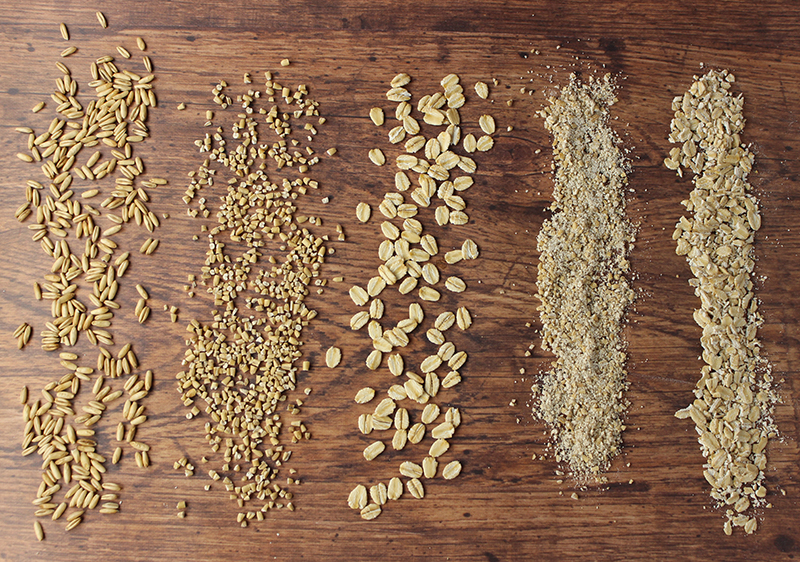
5 Types of Oats
1) Rolled Oats - Sometimes referred to as "Old-Fashioned", these are groats that have been steamed to soften them, then rolled or flattened giving them that classic oat-type look many are familiar with. They are dried for shelf stability and can vary in thickness.
2) Quick or Instant Rolled Oats - These types of rolled oats are the most processed as they go through a longer steaming period. They are usually thinner and broken up into smaller flattened pieces. These features give them a very short cook time.
3) Steel-Cut or Irish Oats - These are whole groats that are steel-blade cut into smaller grain-like pieces. Oatmeal made with steel-cut oats is generally chewier, nuttier tasting and takes much longer to cook as it's not pre-heated.
4) Scottish Oats - Deep-seated in the Scottish tradition, these are whole unheated groats that have been stone-ground into a course meal which creates a porridge-style texture when cooked.
5) Whole Oat Groats - These are the whole groats that are usually soaked overnight and slow-cooked as a type of grain similar to barley. Its soft tender texture goes well in soups, stews and pilafs.
While oats aren't considered suitable for a ketogenic diet, they can be a great plant-based alternative to include in other diet types for a number of reasons.
Top 4 Reasons to Eat Oatmeal
1) Oatmeal Contains Beta-Glucans
2) Oatmeal for Weight Loss or Weight Gain?
3) Oatmeal, Why It’s Great for Seniors
4) Oatmeal as a Nutritious Breakfast Food
1) Benefits of Oatmeal, Contains Beta-Glucans
Oats are one of the highest food sources of a type of soluble fiber and polysaccharide called BETA-GLUCAN. This is the component that makes them extra thick and creamy when heated with liquid.
Different than the highly structured beta-glucans found in medicinal mushroom species, this variety is most well-known for its gel-like fiber that has been claimed to be one of the LDL cholesterol-lowering foods.
It's also likewise on the list of foods that can protect against heart or cardiovascular issues according to other research.
Oat beta-glucans are additionally a prebiotic for healthy gut bacteria and support a balanced gut microbiome, a key element to proper immune functions.
2) Benefits of Oatmeal for Weight Loss or Weight Gain?
Oatmeal can be a good option when whole grain carbohydrates are on the menu. Like other grains, oats can be considered a nutritive as well as building-type food beneficial for both weight loss and weight gain depending on intake.
Because a bowl of fiber-rich oatmeal can help to satisfy the appetite, it is often recommended to those looking to reduce excess body weight. This is especially the case for steel-cut or old-fashioned rolled oats that take longer to digest and have less of a blood sugar spike.
Generally, however, regular consumption of high-carb foods aren't the best choice if weight loss is your goal. In our opinion, keto diet protocols may be better for such objectives.
As far as calories per serving, oatmeal is much lower than refined grains, pasta and bread products but also comes in slightly below other types of whole grains as well as gluten-free alternatives.
Total Calories - Grain Comparison
(One Cup Serving of Cooked Grain)
Rolled Oats
Total Calories - 166
From Carbohydrate - 116
From Fat - 29.8
From Protein - 20.6
Brown Rice (Long Grain)
Total Calories - 216
From Carbohydrate - 185
From Fat - 14.7
From Protein - 17.2
Quinoa
Total Calories - 222
From Carbohydrate - 157
From Fat - 32
From Protein - 32.6
Millet
Total Calories - 207
From Carbohydrate - 169
From Fat - 14.6
From Protein - 23.6
One cup of oatmeal made from rolled oats averages about 166 calories and contains approximately 31.8g of carbohydrates. Of total carbs 27g is from starch, 0.6g sugars and 4g from dietary fiber equivalent to 16% the Daily Value (Based on a 2,000-calorie adult diet.)
3) Benefits of Oatmeal, Why It's Great for Seniors
Oatmeal is a popular food choice among senior populations and for a good reason. In Ayurveda, elderhood is considered the Vata phase of life. This is usually marked with qualities that include drying of the skin and bodily tissues, joint pain as well as muscle and bone loss.
Oatmeal with its sweet, thick, heavy and mucilaginous nature is a lubricating food that helps to counteract Vata imbalances. It can foster a soothing impact on the bowels, preventing stool dryness and constipation.
Known to contain antioxidant phenolic alkaloids called AVENANTHRAMIDES (*), these compounds have anti-inflammatory attributes which may account for oatmeal's historical and present-day use in skincare to moisturize as well as relieve itch and irritation. (*)
The oat plant species and its young milky oat tops and oatstraw have long been used by herbalists for their nutritive and calming influence as an herbal nervine. A warm hearty bowl of oatmeal can also hold similar attributes and can be a balancing food to consume in cold winter climates.
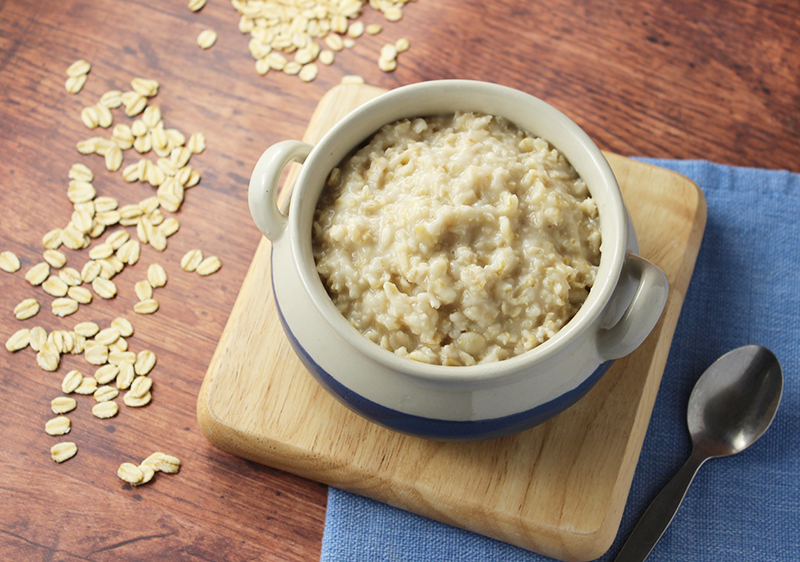
4) Benefits of Oatmeal as a Nutritious Breakfast Food
There are many good reasons to include homemade oatmeal on the list of plant-based breakfast food options. Not only can it be a satiating way to start the day, it also has a number of energy-providing nutrients.
While oats aren't the highest in protein compared to ancient grains like teff, quinoa and amaranth, they do have a notable amount. Oatmeal according to nutrition data contains about 6 grams of protein per one cup serving.
Oats are a good source of the minerals manganese, phosphorus, selenium, zinc, magnesium and iron as well as B vitamins like thiamine, B5, B6, folate and niacin.
Learn more about the Pros and Cons of Oat Milk.
Note: Oats are naturally gluten-free, but for those with gluten
sensitivities it is imperative that you purchase certified gluten-free
oats. This ensures that they haven't been cross-contaminated with wheat
grains or other food allergens like peanuts or soy.
When preparing oatmeal, it's recommended to avoid prepackaged varieties that include lots of sugar. Making it from scratch is usually better because it enables you to tailor sweeteners and other add-ons to your own health objectives.
Precautions:
Oats and oatmeal should be avoided by those with allergic sensitivities to avenin oat protein. Consult your nutritionist or healthcare professional before consuming oats or oatmeal on a regular basis if you are pregnant, nursing, taking prescribed medications or if you have a serious medical condition.
Shop Related Products (About Affiliates & Amazon Associate Paid Links)
Affiliate Disclaimer: This section contains affiliate product links. If you make a purchase through our recommended links, we receive a small commission at no additional cost to you. Thanks for the support.

